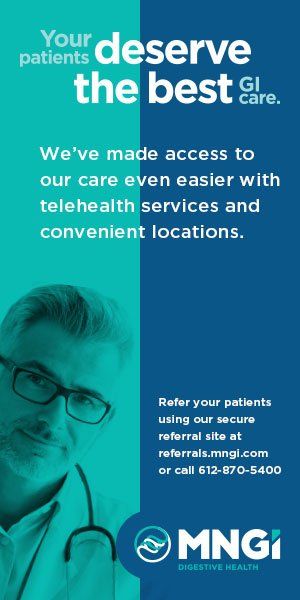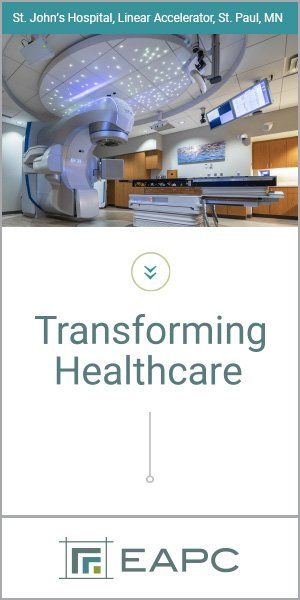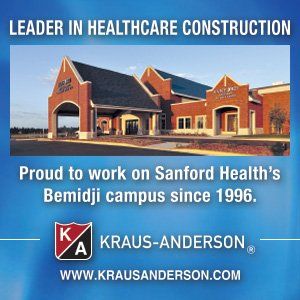Interview
50 Years of Rural Health Care Leadership
Caryn Gerber, MBChB, Program Director, Duluth Family Medicine Residency Program
The Duluth Family Medicine Residency Program recently celebrated its 50th anniversary. Please share some of the details around the original program mission and how it has grown.
The Duluth Family Medicine Residency Program celebrated its 50th anniversary on June 30, 2025, after initially opening for 14 residents on June 30, 1975. Our mission has always been grounded in training compassionate and skilled family medicine residents who are prepared to practice in rural communities. Since the original 14 residents, we have grown over the years to currently have 24 residents as an 8/8/8 program. We continue to live by our mission statement of “dedication to educating compassionate, empowered and skilled family medicine specialists who are prepared to be the foundation of healthy communities.”
We train compassionate, skilled family physicians and prepare them to be the foundation of healthy communities. Most of our residents go on to practice in rural communities with populations of 25,000 or fewer. Our graduates have a 100% American Board of Family Medicine (ABFM) pass rate. We are deeply rooted in the surrounding community and serve a socioeconomically diverse patient base. Our hospital training sites are regional hubs within walking distance of the clinic Since the program opened, 425 graduating clinicians have been prepared specifically to practice in small towns, which face a shortage of providers and thus reduced access to quality health care.
Please discuss the current regional partnerships that create the program and how you work with them.
We have been extremely fortunate to have support from the University of Minnesota, Essentia Health and Aspirus St Luke’s as our regional partners. We have a representative board member from each of the health care organizations on our Duluth Graduate Medical Education Council to help with educational and financial matters.
All faculty members, as well as the residents and other staff, are employed by Essentia, which manages the program and develops the curriculum. Residents get practical experience with a vulnerable patient population at the Duluth Family Medicine Clinic, located in the city’s Central Hillside neighborhood. Hospital training sites — Essentia Health-St. Mary’s Medical Center and St. Luke’s — are within walking distance of the clinic. Rotations also occur at many of Essentia’s rural clinics.
The training is intentionally diverse and rigorous. Residents are exposed to a broad spectrum of family medicine. They can choose electives to tailor their experience and supplement the family medicine focus, so it aligns with career aspirations; for example, advanced obstetrics with C-section training if that’s of particular interest.
The emphasis on rural and underserved communities informs the program’s design. Residents receive extra training in OB, behavioral health, substance use disorders and the emergency department — areas they are likely to encounter in remote regions, where specialists may not be immediately available. Rural rotations deliver valuable insight into the breadth of practice. Indeed, small-town providers wear many hats.
In family practice, you provide comprehensive care to the communities, not only as the family physician, but working in a rural ED providing emergency care, orthopedic procedures and OB/GYN services. You can do all of it. Patient needs vary, as do their ages. You’re taking care of a newborn and then you’re seeing a 95-year-old.
One area of partnership that does not get a lot of attention, and does not involve local partnerships, is our global family medicine program. Residents have the opportunity to participate in international experiences, which may be based on current international relationships and customized to a trainee’s interests and goals. Experiences align with the Brocher Declaration established by the Advocacy for Global Health Partnerships to promote equity in global health. Residents have participated on training programs in such far-flung global locations as Equador, India, Thailand, Indonesia, Kenya, South Africa, Uganda, South Korea and more. Two of our partners in this effort are the Consortium of Universities for Global Health and the World Organization of National Colleges, Academies and Academic Associations of General Practitioners/Family Physicians.
We need more residency programs for training future primary care physicians.
Physicians in residency training face challenges related to high workloads and low income in programs nationwide. How are you addressing these concerns in your program?
Residents traditionally have experienced high workloads specifically related to patient encounters, call schedules and time constraints of an average three-year residency training program. Introduction of the 80-hour work week limit in USA residency programs began in 2003 in response to concerns about resident fatigue and the impact of long hours on patient care and resident well-being. Since then, the ACGME has mandated these duty hour standards. There is, however, a constant pressure to balance the need for a robust educational experience with ensuring that we are training clinically and academically astute physicians within the time constraints of three years. There is a lot to learn, and the field of medicine is constantly changing. If we look at reducing hours to enable decreased workloads and improve hours further, then we may have to revisit the length of training to be able to guarantee the same results. We are fortunate to be a part of the University of Minnesota as far as our resident salaries are concerned. They have really paid attention to the rising cost of living and increasing residents’ wages to address these concerns. In addition, Essentia is providing access to competitive health insurance plans if residents desire.
The American Board of Family Medicine (ABFM) recently evaluated nearly 800 family medicine residencies nationwide and your program ranked in the top 2%. What can you share about this?
ABFM was established in 1969 and has been setting educational and training standards and certifying family physicians for more than 50 years. There are 782 family medicine residencies in the country. Of those, 685 had five years of data to include in the ABFM report. From 2019 to 2023, our average score for the residency program exam among first-time takers was 596; the national average for the same time period was 535. Only 11 programs in the country had a higher board score average. Additionally, all 45 Duluth residents who completed their training during those five years passed the exam, for a 100% success rate. Our hope is that, our residents come out feeling like: OK, I can do this. I’m ready for this.
What are the biggest challenges and rewards to practicing medicine in a rural setting?
We are seeing more workforce shortages in our rural health care settings, with difficulties in recruiting and retaining health care providers. In fact, only 10% of all physicians in the U.S. work in rural settings. This places an increased workload and strain on the physicians already in the communities, leading to potential burnout. There is also the challenge of providing health care in these areas with fewer resources, requiring the family physician to have a broad scope of practice as there may not be specialist access for miles. Rural hospitals are more susceptible to closures and hardships. The rewards to practicing in a rural setting, as I have experienced in the past, are that you are able to form unique relationships with your patients, supporting each other in many ways and enjoying that continuity of care over the years. One develops a sense of purpose in making a meaningful impact in the community. It can be a great way to raise a family and enjoy the wonderful recreational resources our more remote communities have to share.
What qualities are you looking for in the individuals you bring into your program?
We seek candidates who are looking for a robust, broad scope family medicine training experience who have an interest in a rural practice one day, but we have also had many residents who remain local. Valuable qualities include professionalism, being able to work effectively in a team setting, dedication to patient and community care, integrity, a sense of humor and positivity.
Current federal administrative directions put additional stress on an already over-taxed system – what are your thoughts on this?
Family medicine is going to be facing multiple challenges with current proposals for Medicaid funding changes, which will affect our patients, our hospitals and our practices. Hospitals could face financial losses of millions of dollars, and the downstream effects on primary care services are concerning, specifically for those underserved and under-resourced areas. We as primary care physicians need to advocate for our patients and their medical care by being involved and having a voice at all levels of administration.
As a northern Minnesota native, you went to medical school in South Africa. Please share some of the most surprising elements of that experience?
It was training in South Africa that made me fall in love with rural primary care. I was in medical school on a rural OB rotation when I saw the benefits of having full-scope family physicians in our remote communities, providing all aspects of primary care. I worked with one FP who I remember running over to the hospital from his clinic to deliver a baby with me, then back again later to admit another sick patient with TB, only to return home that evening to attend the school board meeting. South Africa is a country that lacks many resources in rural settings, and seeing how valuable family physicians were to their communities gave me a unique perspective.
From your experience, what are the most important ways the residency process can be improved?
I believe that we need more residency programs for training future primary care physicians. We need to look at bringing residency programs to those rural areas to be able to support local communities and keep our physicians there. Optimizing the application process with the integration of technology, including signaling, has been helpful. We should look at recruitment strategies, including pathways such as RPAP for medical students focusing on family medicine, in addition to refining the training curriculum in general to meet the needs of communities.
What are the most important lessons you hope your residents learn in your program?
Number one, I hope they feel that they have received the training they sought to achieve when they applied to our residency program, that their time during residency was filled not only with academic and clinical growth, but also with personal growth and fun with the development of a new sense of purpose and dedication to their profession. I went through residency training here myself and hope to uphold the standard of training that we have here and continue to produce graduates that go out and serve our communities.
Caryn Gerber, MBChB, is the Program Director, Duluth Family Medicine Residency Program.
MORE STORIES IN THIS ISSUE
cover story one
The Rise of Health Misinformation and Disinformation: Recognizing the Truth
By Robin Austin, PhD, DNP, RN, DC, AND Katheren Koehn, MA, RN
cover story two
The Rural Health Transformation Fund: Creating a sustainable way forward















